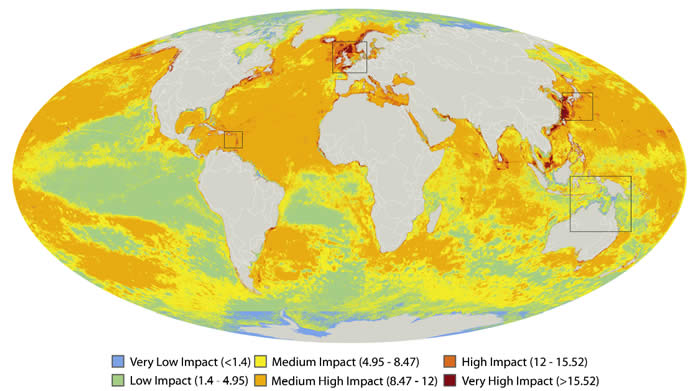Ilankai Tamil Sangam30th Year on the Web Association of Tamils of Sri Lanka in the USA |
|||
 Home Home Archives Archives |
Global Shipping Lanes 2008by National Center for Ecological Anaysis and Synthesis, University of California, Santa Barbara, February 2008
The goal of the research presented here is to estimate and visualize, for the first time, the global impact humans are having on the ocean's ecosystems. Our analysis, published in Science, February 15, 2008 (no subscription required), shows that over 40% of the world's oceans are heavily affected by human activities and few if any areas remain untouched. Global Marine Activity (Shipping) from http://www.nceas.ucsb.edu/GlobalMarine/impacts ****
A Global Map of Human Impacts to Marine Ecosystems
from http://www.nceas.ucsb.edu/globalmarine Using information derived from the Coral Reef Temperature Anomaly Database (CoRTAD) and 16 other layers of data, Dr. Ben Halpern from the National Center for Ecological Analysis and Synthesis (NCEAS) at the University of California Santa Barbara (UCSB) and a team of researchers including NODC's Dr. Kenneth Casey published a paper in Science documenting human impacts on marine ecosystems. The full paper citation is:
The study reveals that over 40% of the world's oceans are heavily affected by human activities and few if any areas remain untouched. These results are illustrated in the image above, adapted from Figure 1 of the paper. In the image, cooler shades (blue to green) represent areas with lower levels of human impact. Warmer shades (yellow to red) represent areas with higher levels of human impact. The project is the first global-scale study of human influence on marine ecosystems. -- from http://www.nodc.noaa.gov/SatelliteData/Cortad/ |
||
|
|||

